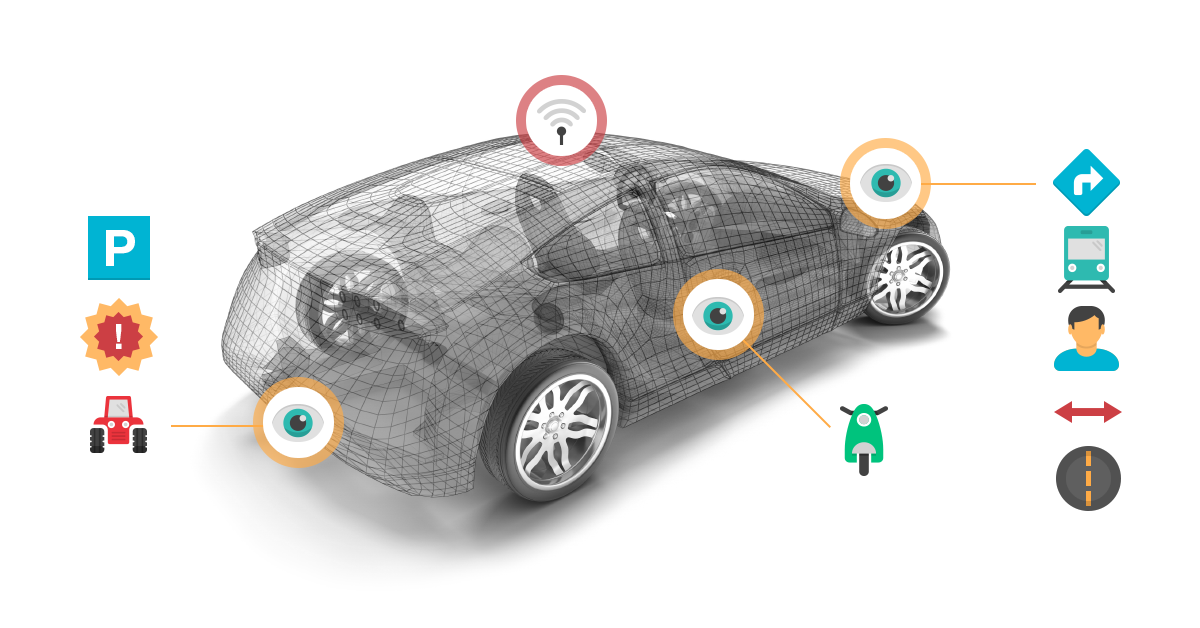Intro-
With autonomous driving technology, that futuristic dream is becoming a reality. This is revolutionizing the way we travel, making our roads safer and more efficient. But what exactly is autonomous driving technology, and how does it work?
Picture this: you’re in the driver’s seat, but instead of gripping the steering wheel and focusing on the road, you can kick back and enjoy the ride. Autonomous driving technology allows vehicles to operate without human intervention by using a complex system of sensors, cameras, and algorithms. These smart cars can perceive their surroundings, make decisions, and navigate through traffic all on their own.
In this article, we’ll explore the fascinating world of autonomous driving technology, unravel how it works, delve into the benefits it brings to our lives, and examine the challenges that lie ahead. So, buckle up and get ready to embark on an exhilarating journey into the future of transportation!

Source: landmarkdividend.com
The Future of Transportation: Autonomous Driving Technology
Welcome to the future of transportation! Autonomous driving technology, also known as self-driving cars, is revolutionizing the way we travel. With advancements in artificial intelligence and sensor technology, vehicles are becoming capable of navigating and operating without human intervention. In this article, we will explore the various aspects of this driving technology, from its benefits to its potential impact on society.
The Benefits of Autonomous Driving Technology
Autonomous driving technology offers numerous benefits that can transform the way we commute and travel. One of the key advantages is the potential to improve road safety. Self-driving cars use a combination of sensors and real-time data to perceive their surroundings and make informed decisions. With this technology, vehicles can detect and react to potential accidents faster than human drivers, reducing the risk of collisions and saving lives.
Besides safety, autonomous driving technology has the potential to improve traffic flow and reduce congestion. Self-driving cars can communicate with each other and with traffic management systems, allowing for more efficient utilization of road space. This can lead to smoother traffic flow, shorter commute times, and less time wasted in traffic jams. Additionally, self-driving cars can optimize fuel consumption, leading to reduced emissions and a positive environmental impact.
Another significant benefit of autonomous driving technology is increased mobility for those who are unable to drive. Elderly individuals and people with disabilities often face transportation challenges, limiting their independence. Self-driving cars can provide a solution by offering a safe and convenient means of transportation for everyone, regardless of their driving abilities.
The Technology Behind Autonomous Driving
Autonomous driving technology relies on a combination of advanced hardware and software systems. Key components include cameras, lidar (light detection and ranging), radar, and GPS. These sensors gather data about the vehicle’s surroundings, detecting objects, pedestrians, and other vehicles. The data is then processed by onboard computers, which use complex algorithms and artificial intelligence to interpret the information and make driving decisions.
Machine learning plays a crucial role in this. As self-driving cars gather more data from their experiences on the road, they continually learn and improve their driving capabilities. They can adapt to various weather conditions, road types, and traffic situations, becoming more proficient over time. Machine learning also enables autonomous vehicles to navigate complex scenarios, such as merging into traffic or responding to unexpected obstacles.
One of the challenges in developing this technology is ensuring its safety and reliability. Extensive testing and validation processes are required to ensure that self-driving cars can handle a wide range of scenarios and edge cases. Additionally, cybersecurity is a critical consideration to protect autonomous vehicles from potential hacking threats.
The Potential Impact on Society
The widespread adoption of autonomous driving technology can have far-reaching implications for society. One major area of impact is the transportation industry. The introduction of self-driving cars could disrupt traditional taxi services and ride-sharing companies, as people may prefer the convenience and cost-effectiveness of autonomous vehicles. It may also create new business opportunities in areas like fleet management and vehicle maintenance.
Autonomous driving technology can also transform urban planning and infrastructure. With self-driving cars, the need for parking spaces could decrease significantly, freeing up land for other purposes. Cities may need to reimagine road systems and traffic regulations to accommodate self-driving vehicles and optimize traffic flow. Additionally, traffic accidents and the associated costs of medical care, vehicle repairs, and insurance claims could be drastically reduced.
In summary, it is poised to revolutionize the way we travel. Through improved safety, enhanced mobility, and reduced congestion, self-driving cars offer numerous benefits. The technology behind autonomous driving is rapidly advancing, driven by cutting-edge sensors, AI algorithms, and machine learning. As self-driving cars become more common, their impact on society will extend beyond transportation, influencing industries and reshaping urban landscapes.
The Road Ahead: Challenges and Opportunities
While autonomous driving technology holds immense promise, it also faces several challenges and opportunities. One of the key challenges is the legal and regulatory framework. Governments and policymakers need to establish guidelines and standards that ensure the safe operation of self-driving cars on public roads. Additionally, ethical considerations must be addressed, such as how autonomous vehicles should respond in situations where a collision is unavoidable.
Another challenge lies in public acceptance and trust. While it offers numerous benefits, some individuals may be reluctant to trust their lives to a machine. Increasing public awareness and education around the capabilities and safety features of self-driving cars will be crucial in gaining acceptance and building trust.
Opportunities abound in various industries due to autonomous driving technology. Insurance companies, for example, can adapt their offerings to align with the changing landscape of vehicle ownership and liability. Infrastructure companies can explore innovative solutions to support self-driving cars, such as wireless charging stations and smart traffic management systems. Moreover, the automotive industry itself has an opportunity to reimagine the design of vehicles, focusing on passenger comfort and new features suited for the autonomous driving experience.
Key Takeaways: Autonomous Driving Technology
- Autonomous driving technology enables cars to drive themselves without human intervention.
- Self-driving cars use various sensors and technologies, such as cameras and radars, to perceive their surroundings.
- Artificial intelligence algorithms analyze the sensory data to make decisions and control the car’s movements.
- Autonomous vehicles have the potential to improve road safety, reduce traffic congestion, and provide convenient transportation services.
- However, the development and widespread adoption of autonomous driving technology pose challenges in terms of legal and ethical considerations.
Frequently Asked Questions
In this section, we will address some commonly asked questions about autonomous driving technology to help you better understand this fascinating innovation.
1. How does autonomous driving technology work?
Autonomous driving technology relies on a combination of sensors, cameras, and advanced algorithms to enable a vehicle to navigate and react to its surroundings without human intervention. These sensors gather information about the vehicle’s environment, such as road conditions, traffic signs, and the position of other vehicles. The data is then processed by the algorithms, which make decisions on acceleration, braking, and steering. This allows the vehicle to drive itself, following a predetermined route or adapting to changing road conditions in real-time.
By analyzing the data from various sensors and using artificial intelligence, this technology can detect and respond to potential hazards faster than human drivers. It can also communicate with other vehicles or infrastructure, improving safety and efficiency on the roads.
2. Are autonomous vehicles safer than human-driven cars?
Autonomous vehicles have the potential to be safer than human-driven cars. According to studies, the majority of accidents are caused by human error, such as distracted driving or impaired judgment. Autonomous driving technology, on the other hand, is not subject to these human limitations. It can constantly monitor its surroundings, react faster, and make more accurate decisions.
However, it is important to note that it is still being refined and tested. While it has the potential to significantly reduce accidents, it is not yet perfect. Ongoing research and development are necessary to continue improving the safety and reliability of autonomous vehicles.
3. How does autonomous driving technology benefit society?
Autonomous driving technology has several potential benefits for society. Firstly, it could greatly enhance road safety by minimizing human errors and reducing accidents. This would not only save lives but also reduce the strain on healthcare systems and decrease insurance costs.
Additionally, autonomous vehicles could improve traffic flow and reduce congestion. By communicating with each other and coordinating movements, these vehicles can optimize their routes, leading to more efficient and smoother traffic patterns. This would result in less time spent in traffic, reducing fuel consumption and emissions.
4. What are the current limitations of autonomous driving technology?
Although autonomous driving technology has made significant advancements, there are still some limitations to overcome. One major challenge is operating in adverse weather conditions, such as heavy rain or snow. The sensors and cameras used by autonomous vehicles may have difficulty accurately detecting objects or road markings in these conditions.
Another limitation is the ability to make complex decisions in unpredictable situations. While this can handle most routine scenarios, it may struggle with unexpected events that require human-like judgment and intuition. Additionally, the cost of autonomous vehicles and the need for extensive infrastructure upgrades are also factors limiting widespread adoption.
5. How will autonomous driving technology impact jobs in the transportation industry?
The emergence of autonomous driving technology raises concerns about its impact on jobs in the transportation industry. While it is true that some job roles may be affected, it is important to remember that new opportunities and job roles will also arise. The development, production, and maintenance of autonomous vehicles will require skilled workers.
Furthermore, this could lead to new transportation services and business models, creating employment opportunities in areas such as fleet management, data analysis, and software development. It is crucial for workers in the transportation industry to adapt their skills to meet the changing demands of this evolving technology.

Source: intland.com
Summary
Self-driving cars are becoming more common, with technology like sensors and AI driving their capabilities. These cars can make our lives easier by reducing accidents and congestion on the roads. However, there are still challenges to overcome, like making sure the technology is safe and reliable. The future of autonomous driving looks promising, but it’s important to keep working on improvements for a safer and more efficient transportation system.
